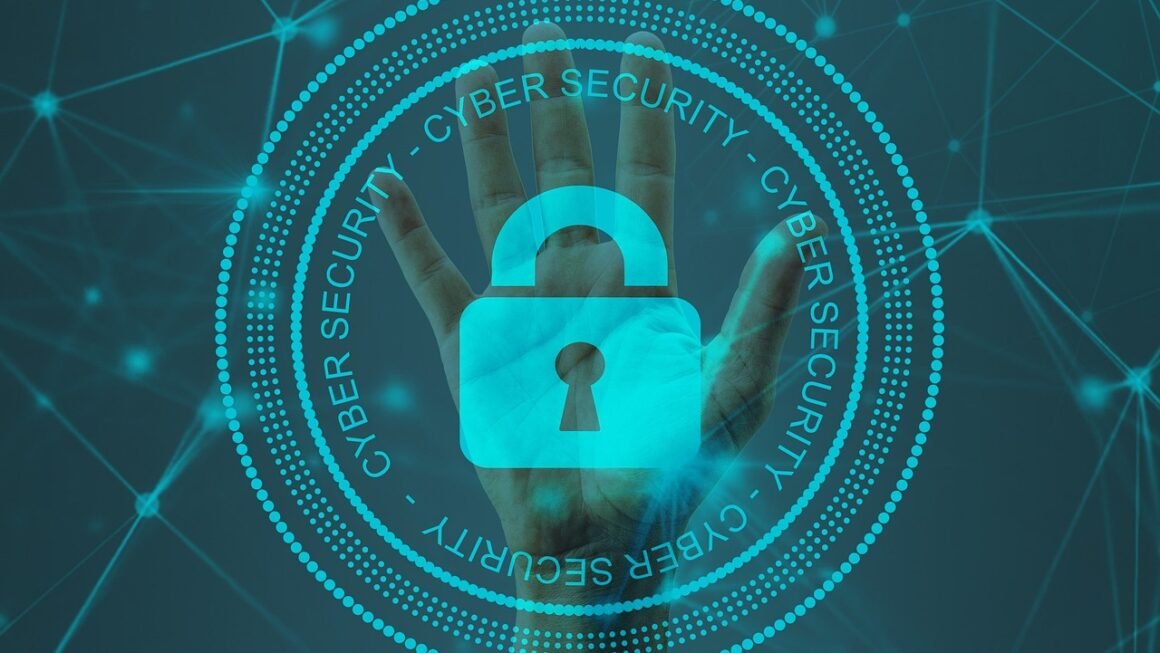Imagine waking up one morning to find your bank account drained, credit cards maxed out, and a mountain of debt in your name that you never incurred. This is the harsh reality for millions of people each year, victims of identity theft, a crime that can wreak havoc on your finances, credit rating, and peace of mind. Understanding the methods used by identity thieves and taking proactive steps to protect yourself is crucial in today’s digital age. This guide will provide you with the knowledge and tools you need to safeguard your identity and prevent becoming a statistic.
Understanding Identity Theft: What It Is and How It Happens
Identity theft occurs when someone steals your personal information, such as your name, Social Security number, credit card details, or driver’s license number, and uses it without your permission to commit fraud or other crimes. The consequences can be devastating, ranging from financial losses to legal complications.
Common Types of Identity Theft
- Financial Identity Theft: This is the most common type, where your information is used to open fraudulent accounts, make unauthorized purchases, or file false tax returns.
Example: An identity thief opens a credit card in your name and racks up thousands of dollars in debt.
- Medical Identity Theft: Your health insurance information is stolen to obtain medical care, prescriptions, or file false insurance claims. This can jeopardize your medical history and treatment.
Example: Someone uses your health insurance card to get prescription painkillers.
- Government Documents and Benefits Fraud: This involves using your personal information to obtain government benefits such as unemployment, Social Security, or tax refunds.
Example: A thief files a fraudulent tax return using your Social Security number to claim a refund.
- Criminal Identity Theft: Someone arrested provides your name and other identifying information to law enforcement. This can result in arrest warrants being issued in your name.
Example: An individual is pulled over for drunk driving and provides your name and date of birth to the police.
How Identity Thieves Obtain Your Information
Identity thieves use various methods to steal your personal data. Some common tactics include:
- Phishing: Sending fraudulent emails or text messages that appear to be from legitimate companies or organizations to trick you into providing your personal information.
Example: Receiving an email from “your bank” asking you to update your account details by clicking on a link.
- Data Breaches: Hacking into databases of companies or organizations that store your personal information.
Example: A retailer’s customer database is breached, exposing millions of customers’ credit card numbers and addresses.
- Mail Theft: Stealing mail containing your financial statements, credit card offers, or other sensitive documents.
Example: An identity thief steals your mail to obtain your new credit card before you do.
- Dumpster Diving: Sifting through your trash to find discarded documents containing personal information.
Example: Recovering old bank statements or credit card applications from your trash.
- Skimming: Using a device to steal credit card information from a magnetic stripe when you swipe your card.
Example: A restaurant employee uses a skimming device to copy your credit card information when you pay the bill.
- Social Media: Gathering personal information from your social media profiles.
Example: Using information from your Facebook profile, such as your birthday and pet’s name, to answer security questions.
Protecting Yourself From Identity Theft: Proactive Measures
The best defense against identity theft is prevention. Taking proactive steps to safeguard your personal information can significantly reduce your risk of becoming a victim.
Secure Your Online Accounts
- Use Strong, Unique Passwords: Create complex passwords that are difficult to guess and use a different password for each online account. Consider using a password manager to generate and store your passwords securely.
Example: Instead of using “password123” for all your accounts, create strong passwords like “P@$$wOrdZ!987” and “My$tr0nGp@$$w0Rd”.
- Enable Two-Factor Authentication (2FA): Add an extra layer of security to your accounts by requiring a second verification code, typically sent to your phone, in addition to your password.
Benefit: Even if someone knows your password, they won’t be able to access your account without the verification code.
- Be Wary of Phishing Emails and Links: Never click on links or open attachments in suspicious emails. Verify the sender’s identity before providing any personal information.
Tip: Hover over links to see the actual URL before clicking. Look for misspellings, grammatical errors, and unfamiliar domain names.
- Keep Your Software Updated: Install the latest security updates for your operating system, web browser, and antivirus software to protect against malware and vulnerabilities.
Safeguard Your Personal Documents
- Shred Sensitive Documents: Shred any documents containing personal information, such as bank statements, credit card offers, and medical records, before discarding them.
Benefit: Prevents identity thieves from recovering your information from your trash.
- Secure Your Mail: Collect your mail promptly and consider using a locked mailbox to prevent mail theft.
Tip: If you’re going out of town, ask a trusted neighbor to collect your mail or put a hold on your mail delivery.
- Protect Your Social Security Number: Treat your Social Security number like cash. Only provide it when absolutely necessary and never carry your Social Security card in your wallet.
Example: Question why someone needs your SSN. Can you provide an alternate identifier?
- Monitor Your Credit Reports: Regularly check your credit reports from all three major credit bureaus (Equifax, Experian, and TransUnion) to detect any suspicious activity. You are entitled to a free credit report from each bureau once per year at AnnualCreditReport.com.
Actionable Takeaway: Set reminders to pull your credit reports at different times of the year to spread out the monitoring.
Practice Safe Online Behavior
- Use Secure Wi-Fi Networks: Avoid using public Wi-Fi networks for sensitive transactions, such as online banking or shopping. Use a virtual private network (VPN) to encrypt your internet traffic.
Benefit: A VPN protects your data from being intercepted by hackers on public Wi-Fi networks.
- Be Cautious on Social Media: Limit the amount of personal information you share on social media platforms. Identity thieves can use this information to answer security questions or create fake accounts in your name.
Example: Avoid posting your birthday, address, or phone number on social media.
- Shop Securely Online: Look for the “https” in the website address and a padlock icon in the address bar to ensure that your information is encrypted.
Tip: Only shop on websites that you trust and that have a good reputation.
Responding to Identity Theft: Steps to Take
If you suspect that you’ve been a victim of identity theft, take immediate action to minimize the damage and restore your identity.
Report the Identity Theft
- File a Police Report: Report the identity theft to your local police department. This will create an official record of the crime and can be helpful when dealing with creditors and other organizations.
- File a Complaint with the FTC: Report the identity theft to the Federal Trade Commission (FTC) at IdentityTheft.gov. The FTC provides resources and guidance to help you recover from identity theft.
- Contact the Credit Bureaus: Place a fraud alert on your credit reports with all three major credit bureaus. A fraud alert requires creditors to verify your identity before opening new accounts in your name. Consider a credit freeze.
Benefit:* A credit freeze prevents anyone, including yourself, from opening new accounts until you lift the freeze.
- Alert Your Bank and Credit Card Companies: Notify your bank and credit card companies immediately if you suspect that your accounts have been compromised. Close any fraudulent accounts and dispute any unauthorized charges.
Review and Correct Your Credit Reports
- Obtain Copies of Your Credit Reports: Obtain copies of your credit reports from all three major credit bureaus and carefully review them for any errors or suspicious activity.
- Dispute Errors: Dispute any inaccurate or fraudulent information on your credit reports with the credit bureaus. Provide documentation to support your claims.
- Monitor Your Credit Reports Regularly: Continue to monitor your credit reports regularly for any new suspicious activity. Consider subscribing to a credit monitoring service that will alert you to changes in your credit reports.
Secure Your Identity Moving Forward
- Change Your Passwords: Change the passwords for all your online accounts, especially your financial accounts and email accounts.
- Review Your Financial Statements: Review your bank and credit card statements regularly for any unauthorized transactions.
- Be Vigilant: Remain vigilant and continue to monitor your credit reports and financial accounts for any signs of identity theft.
Identity Theft Resources and Support
There are numerous resources available to help you prevent, detect, and recover from identity theft.
Government Resources
- Federal Trade Commission (FTC): IdentityTheft.gov provides information, resources, and a reporting tool for victims of identity theft.
- Social Security Administration (SSA): SSA.gov provides information on protecting your Social Security number and reporting Social Security fraud.
- Internal Revenue Service (IRS): IRS.gov provides information on protecting yourself from tax-related identity theft.
Credit Bureaus
- Equifax: Equifax.com
- Experian: Experian.com
- TransUnion: TransUnion.com
Non-Profit Organizations
- Identity Theft Resource Center (ITRC): ITRC.org provides support and resources to victims of identity theft.
Conclusion
Identity theft is a serious crime that can have devastating consequences. By understanding the methods used by identity thieves and taking proactive steps to protect yourself, you can significantly reduce your risk of becoming a victim. Stay vigilant, monitor your credit reports and financial accounts regularly, and take immediate action if you suspect that you’ve been a victim of identity theft. Remember, protecting your identity is an ongoing process that requires diligence and awareness. By taking the necessary precautions, you can safeguard your personal information and protect yourself from the harmful effects of identity theft.



